The National Aviary is committed to educating, training, and mentoring the next generation of conservation leaders, and oversees a team of Research Associates and Student Researchers.
Dr. Nathan Brouwer, University of Pittsburgh
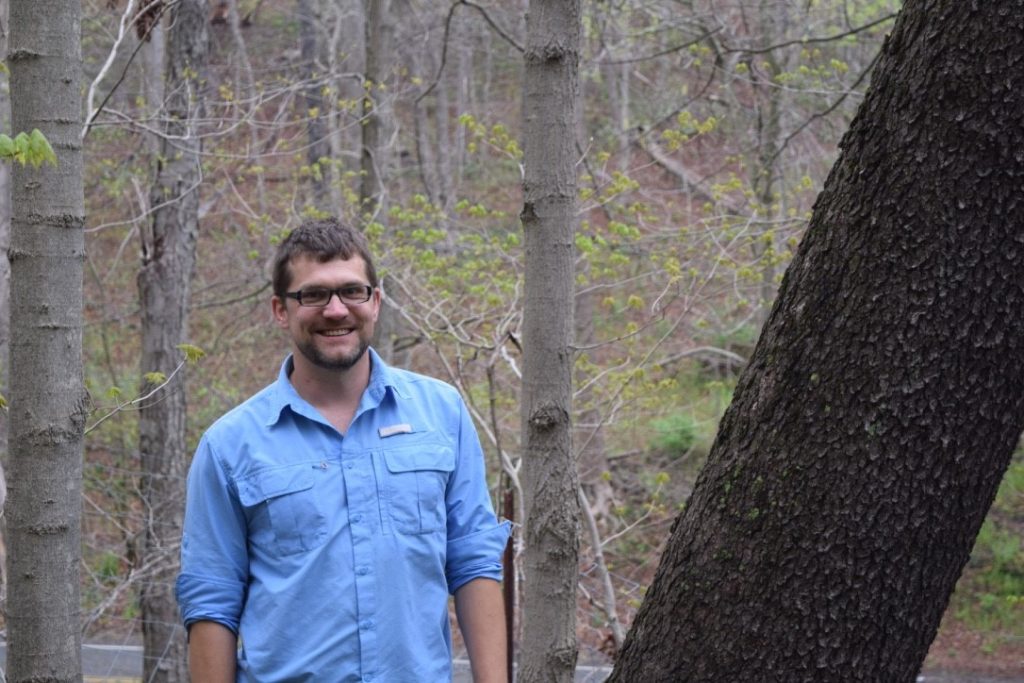
Nathan Brouwer is a quantitative ecologist specializing in analyzing long-term data and building population models to understanding how bird populations change over time. Dr. Brouwer received his B.S. in Biology from Seattle Pacific University in 2002 and served from 2004-2006 as a Peace Corps Volunteer in The Gambia, West Africa. He completed his doctorate in 2015 with Susan Kalisz at the University of Pittsburgh, where he studied the harmful impacts of invasive species and overabundant deer on populations of forest plants and trees. In addition to working for the Department of Conservation and Field Research, Dr. Brouwer teaches biostatistics at Duquesne University and California University of Pennsylvania. In the summer of 2017, he also began a three-year teaching fellowship at La Roche College, where works to integrate avian conservation and research projects into La Roche’s BioSolve advanced research methods class.
Dr. Jessie L. Knowlton, Wheaton College
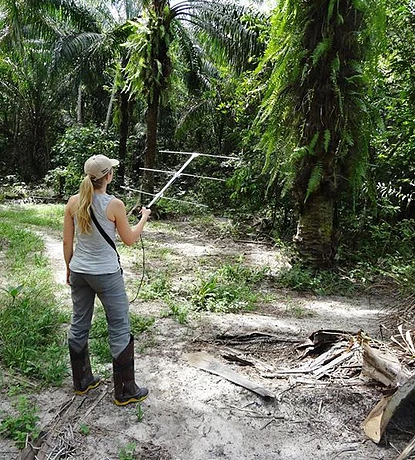
Jessie L. Knowlton is an Assistant Professor of Biology at Wheaton College in Massachusetts, where she teaches ecology and ornithology. Her background is in ecology and evolution, avian ecology, and conservation biology. Her research, most of which is in Latin America, centers on how avian communities respond to anthropogenic impacts, including invasive species, habitat fragmentation, changing land uses, and climate change. Jessie’s Ph.D. dissertation examined the impacts of livestock grazing on mixed-species flocks of birds in a unique and highly threatened coastal tropical dry forest ecosystem in Ecuador. Because the fitness benefits of flocking come from a reduced risk of predation or enhanced feeding efficiencies, or both, habitat degradation could lead to changes in the benefits of flocking and thus flock characteristics. Over the last decade, Jessie’s work has become increasingly inter- and transdisciplinary, taking into account the complexity of coupled socio-ecological systems. She was recently involved in a National Science Foundation Partnerships in International Research and Education grant that examined the socioecological impacts of bioenergy development across the Americas.
Mark Michaels, J.D., M.A.
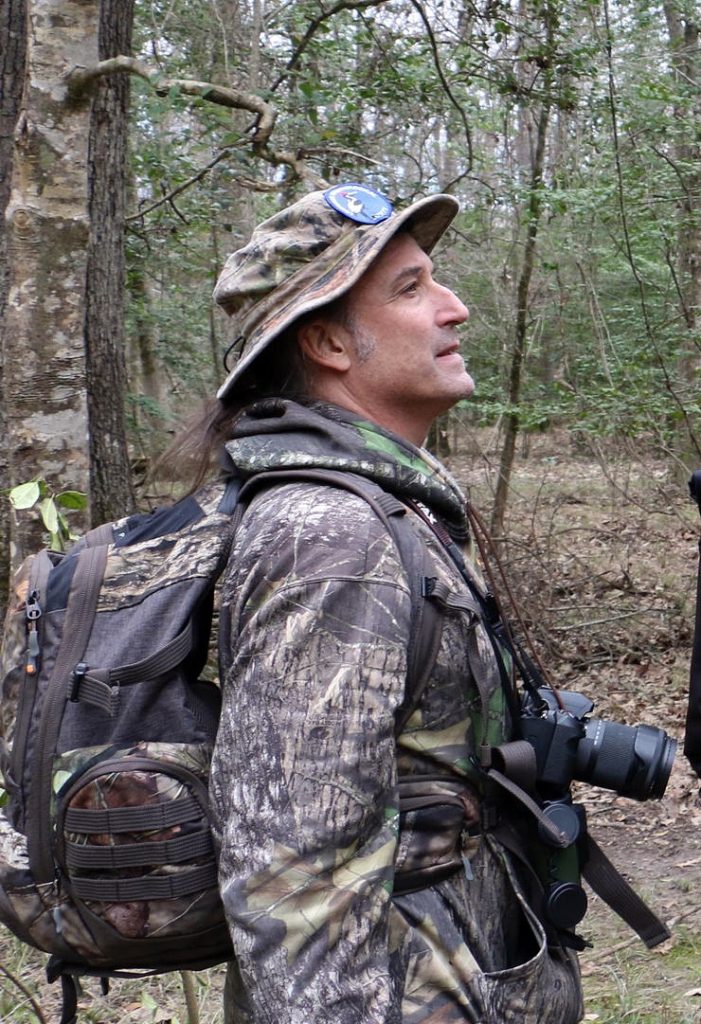
Mark A. Michaels has had a passion for birds since elementary school, and first became fascinated by the Ivory-billed Woodpecker as a fifth grader. His fascination was rekindled by the 2005 Arkansas sighting. Michaels began to study the species in depth. In 2007, he made the first of many trips to the South to search for the Ivory-billed Woodpecker. Since that time, he has spent thousands of hours in southern forests from Arkansas to South Carolina to Florida, and especially in Louisiana. He has extensively researched the Ivory-billed Woodpecker’s natural history, as well as bottomland forest ecology, entomology, and other subjects relevant to understanding the species, the reasons for its decline, and how it might still survive. His research on the Ivory-billed Woodpecker has been cited by BirdLife International. Mark met Frank Wiley in 2008; their collaboration took shape in 2009. They established Project Coyote in 2010 and led it collaboratively until Wiley’s death in 2017. His current affiliation with the National Aviary as a researcher working on Project Principalis [link to: Project Principalis] represents the fulfillment of a lifelong dream.
Michaels and his wife, Patricia Johnson, are the award-winning authors of five books on relationships and sexuality. Mark served as Staff Attorney for the American Indian Law Alliance from 1990 to 2001. He has also worked as a playwright, translator, and Literary Manager. His publications run the gamut from the Fordham Law Review and the Journal of Sociology and Public Policy to Salon.com and Alternet.
Emily Scott, Johns Hopkins University
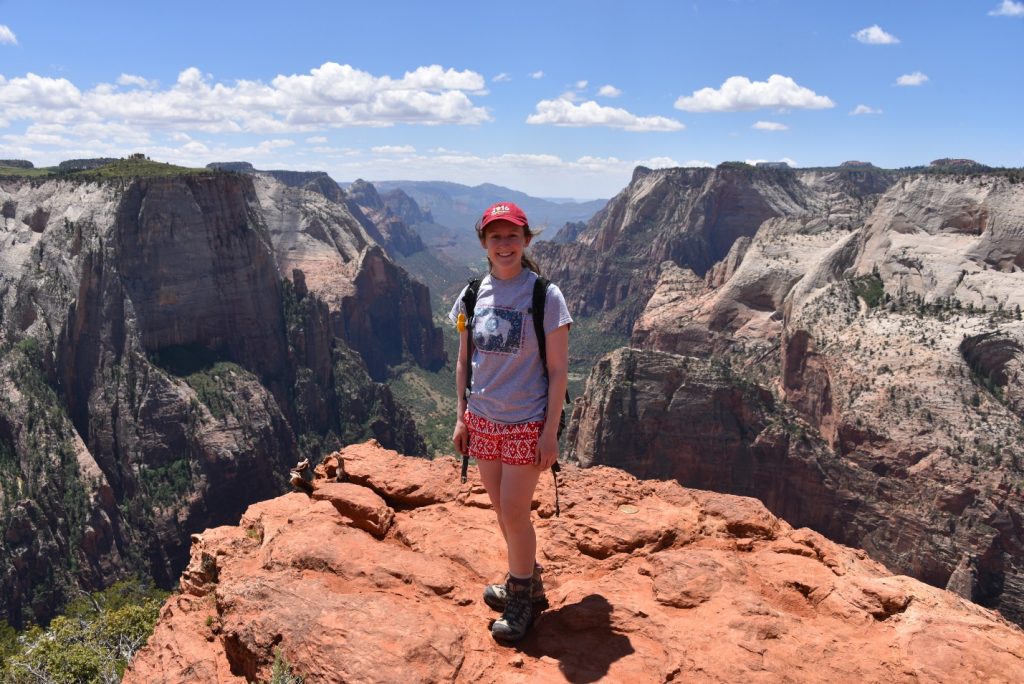
Emily Scott attended the University of Pittsburgh as a Chancellor’s Scholar, graduating summa cum laude in 2016 with a degree in biology and mathematics. She was active in the Mathematics Department, working as a Teaching Assistant and tutor during her time at the university. Emily worked on two projects for her mathematics degree: “Analysis of Bursting Behavior in Single-Neuron Models,” and “Analysis of Predator-Prey Models.” The first of these is published in the University of Pittsburgh’s undergraduate research journal. Emily also worked at the University of Pittsburgh School of Medicine as an undergraduate researcher where she investigated mechanisms for Shingles-induced pain in a rat model. After taking field courses with Dr. Steven Latta in Pennsylvania and Wyoming, Emily began collaborating with Drs. Nathan Brouwer and Latta. She is currently working to better understand how populations of migratory birds change over time by developing statistical techniques and population models. Emily is continuing her education at Johns Hopkins University where she is pursuing a master’s degree in biostatistics.
Dr. Boris Tinoco, Universidad del Azuay, Cuenca, Ecuador
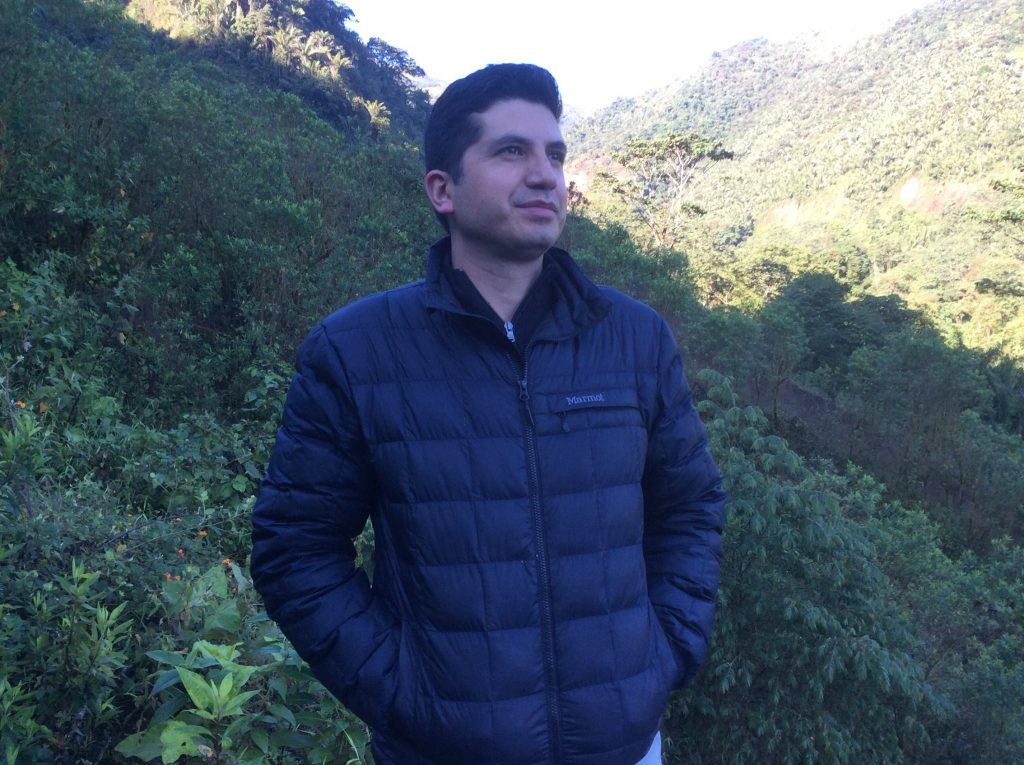
Dr. Boris Tinoco is a professor in the Biology School at Universidad del Azuay, Ecuador. As an ecologist, he is interested in community ecology and functional diversity of birds. Dr. Tinoco conducts studies in natural and disturbed gradients, using observational and experimental studies, to reveal the role of species and diversity in ecological services. Pollination and seed dispersal are key services provided by birds in the tropical forest. Dr. Tinoco’s research seeks to evaluate the status of those services in the Tropical montane forest, with the goal of contributing to bird conservation.
Dr. Cassandra Miller-Butterworth, Penn State University – Beaver

Dr. Cassandra Miller-Butterworth is an Associate Professor of Biology at Penn State Beaver, where she teaches biology and conducts conservation genetics research using molecular techniques (DNA) to study wildlife populations. She studies a variety of species, including bobcats, coyotes, White-tailed Deer, and Little Brown Bats, which have been severely impacted by white nose syndrome. In addition to collaborating with the National Aviary on two projects examining the population genetics of the Louisiana Waterthrush, Dr. Miller-Butterworth is also working with the Pittsburgh Zoo and PPG Aquarium on developing a genetic management plan for endangered African Painted Dogs in human care.
Dr. Pedro Astudillo Webster, Universidad del Azuay in Cuenca, Ecuador
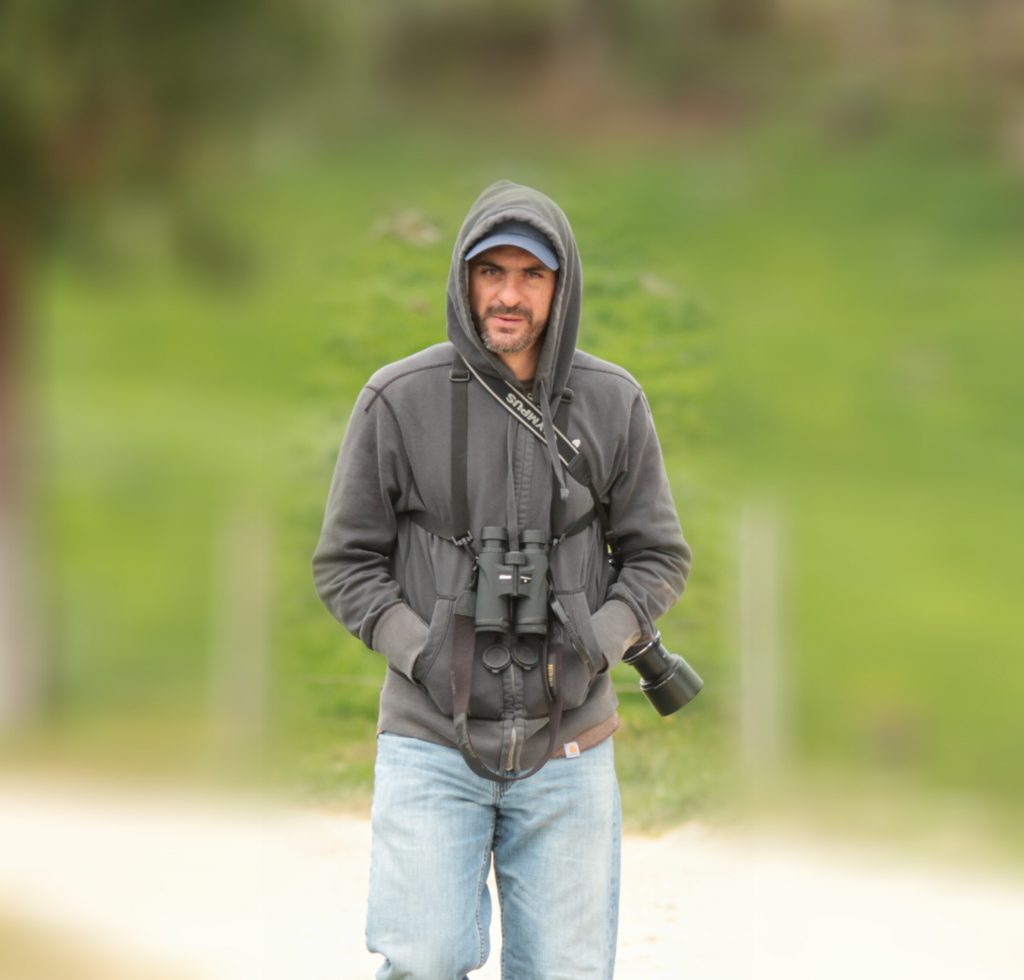
Dr. Pedro Astudillo Webster is an instructor and Research Program Coordinator in the Department of Biology, Ecology and Environmental Management at the Universidad del Azuay in Cuenca, Ecuador. He received his Doctorate Degree in Natural Sciences in the Faculty of Biology, Department of Ecology and Conservation Ecology, at Philipps Universität, Marburg, Germany. His research centers on how changes in land-use and habitat configuration in a fragmented landscape affect high-altitude faunal communities of the southern Andes of Ecuador, using structural characteristics of páramo landscapes to explore effects on a bird community and bird populations like the Andean Condor. His work points to a loss in species richness in highly disturbed areas due to habitat modification and the introduction of non-native plants, as well as an increase in the abundance of generalist species with changes in the bird community composition. Dr. Astudillo Webster’s work indicates that habitat connectivity, as well as the ecological niche of certain species, will be enhanced in well-developed habitat inside of the landscape mosaic (i.e. bigger areas, non-irregular shapes, and heterogeneous vegetation composition), and with more habitat-complexity (i.e. increasing proportion of native woody plants, well-developed vegetation profile) of páramo ecosystems. His research also explores different aspects of Andean fauna such as geographic distribution, morphological analyses, new reports, and any novel diversity patterns.
Andrea Thomen, Grupo Jaragua, Santo Domingo, Dominican Republic
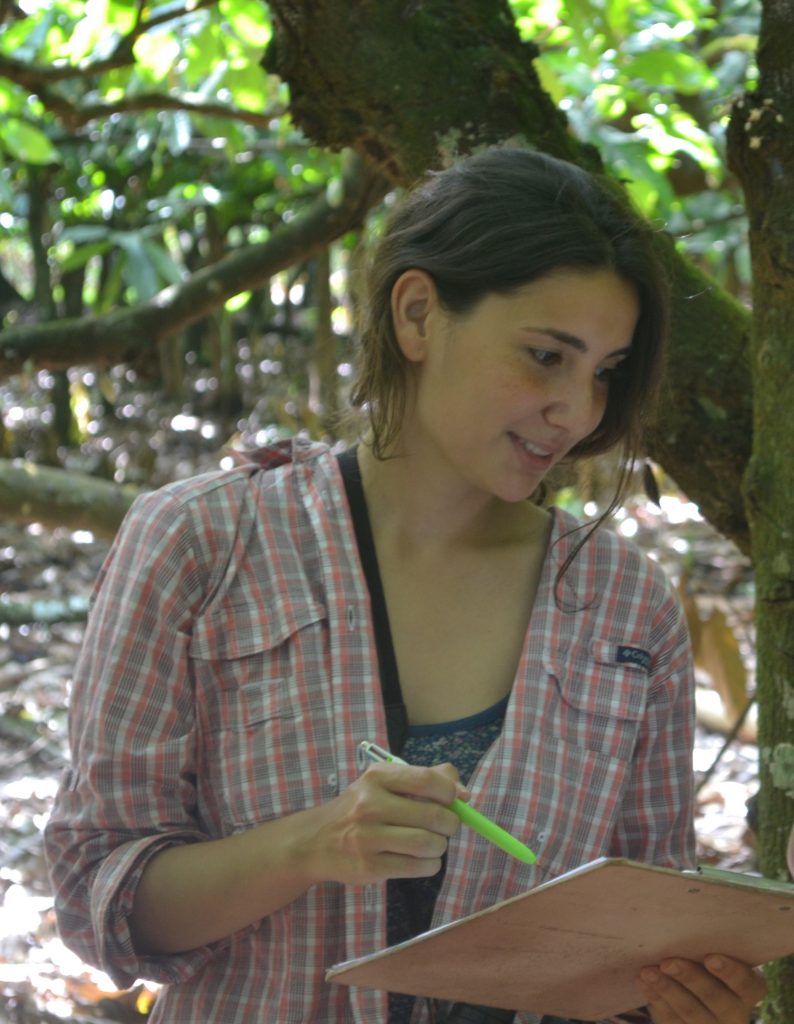
Born in Santo Domingo, Dominican Republic, Andrea Thomen is a biologist interested in avian conservation in Hispaniola and the Caribbean region. She obtained a Bachelor’s Degree in Environmental Sciences at Manhattanville College, Purchase, New York (2010) and a Masters in Science in Conservation Biology at SUNY ESF, Syracuse, New York (2014). Andrea serves as an in-country liaison and representative for the National Aviary and is the lead coordinator of the Bird-friendly Cacao Initiative [link to: Bird-friendly Cacao page]. Her main research interests include effective management and conservation of endangered bird species, avian biodiversity in productive landscapes (e.g. shade coffee and cacao), and understanding human-wildlife dynamics. Thomen is also interested in capacity-building for young scientists and biology teachers.
Dr. Leesia Marshall, Louisiana State University
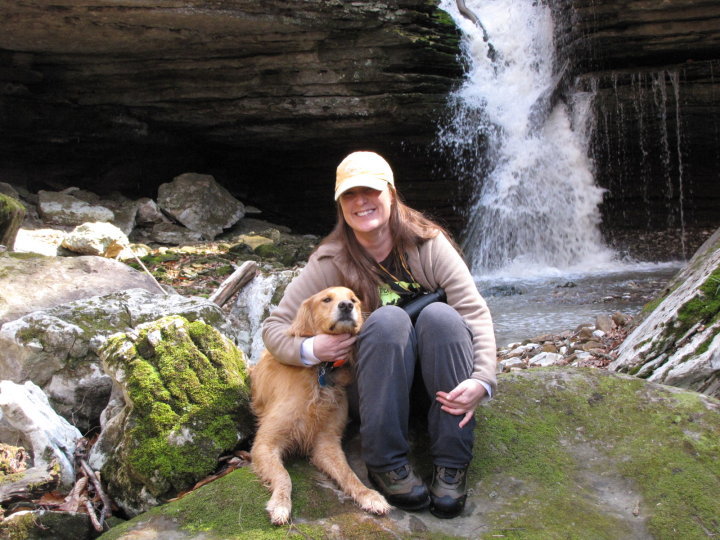
Dr. Leesia Marshall’s research interests include studies of bioacoustics, behavioral ecology, stream ecology, and toxicology. She is currently studying the Carolina Wren and Louisiana Waterthrush in these contexts. The Carolina Wren and RFID technology have allowed her to study correlations of temperature and weather patterns to sexually dimorphic behavior and vocalizations of Carolina Wrens that accompany huddled pair roosting. Future research with Carolina Wrens will include other aspects of bioacoustics, mating and territorial behavior, sexual size dimorphism, winter morbidity, and daily time budgets. Dr. Marshall’s studies of the Louisiana Waterthrush allow her to incorporate studies of riparian and aquatic habitat and the aquatic-terrestrial interface along with impacts of anthropogenic change resulting from unconventional methods of natural gas extraction and effects of biomagnification and bioaccumulation of heavy metals and endocrine disrupting chemicals.
Dr. Letícia Soares, University of Missouri – St. Louis
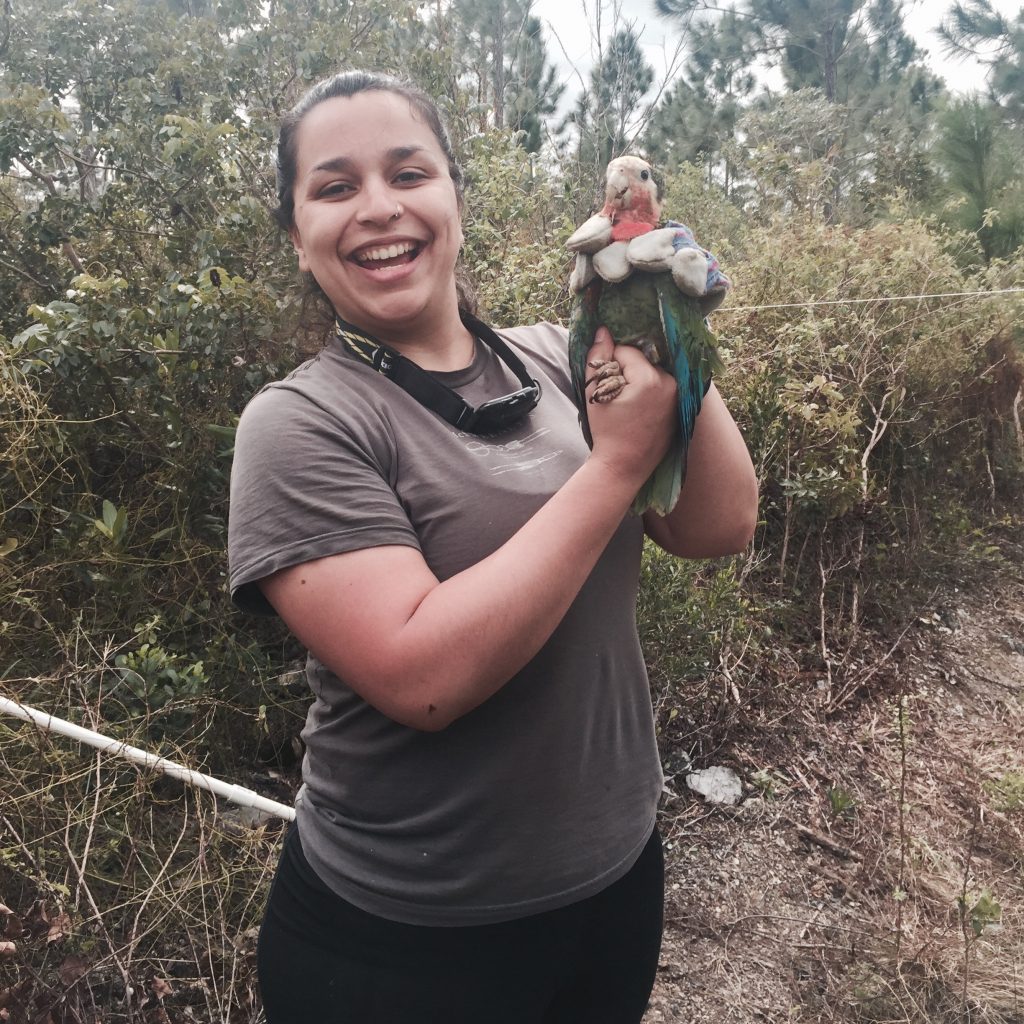
As an evolutionary biologist, Dr. Soares’s research passions center on ornithology, parasitology, and disease ecology. She is interested in understanding host-parasite interactions over time and across space, and how parasitic infections affect the life-history components of their hosts. Dr. Soares’s research combines two groups of organisms with magnificent life-history strategies: birds and their haemosporidian parasites – a group of protozoans that includes the infamous pathogens that cause malaria (Plasmodium sp.) in several vertebrate species. Avian haemosporidian parasites are ubiquitous in nature, making this a suitable study-system to ask questions related to host-pathogen ecology and evolution. Currently, her inquiries relate to determining how individual birds cope with infections and demanding life-cycle stages (e.g. reproduction and migration), as well as to estimating the effects of these pathogens in bird populations.
Maria Milagros Paulino, Grupo Acción Ecológica, Loma de La Joya, San Francisco de Macoris, Dominican Republic
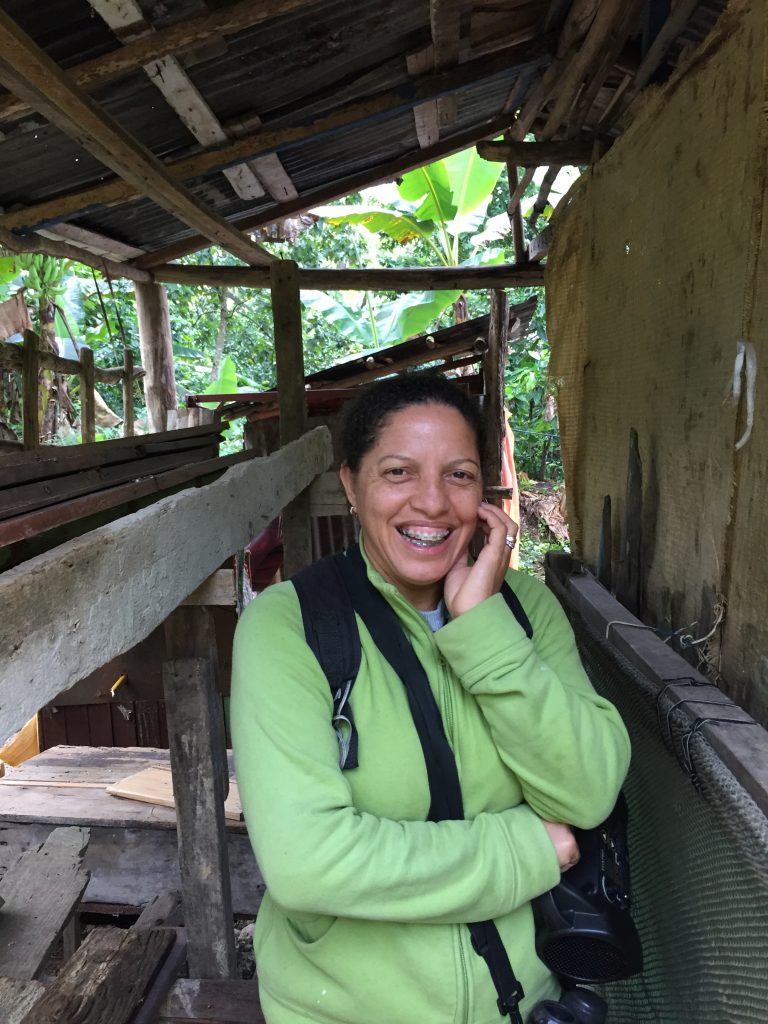
Maria Milagros Paulino’s interest in birdwatching began when her sister gave her a bird book as a gift and she began to go on bird walks with a local Ecology Group in Santo Domingo, Dominican Republic. She began to work in studies of birds in 2001 in a project monitoring the reproductive success of nesting birds in the Sierra de Bahoruco. That study lasted for three years. Later, Paulino receiving training in bird banding, and worked on a five-year project to learn how birds use early-successional habitats in the Dominican Republic, and how well they survive at key study sites. At the same time, she worked on a project studying the ecology of the critically endangered Bay-breasted Cuckoo. Paulino has trained at Point Reyes Bird Observatory in California, the National Aviary, and Powdermill Avian Research Center. She is currently collaborating with Dr. Steven Latta in his studies of factors affecting survival and population size of the Louisiana Waterthrush on breeding grounds in Pennsylvania, and at overwintering sites in the Dominican Republic. Paulino is growing her knowledge of bird ecology and passing on her knowledge to other people in her country.
Danilo Antonio Mejía, Grupo Acción Ecológica, Santo Domingo, Dominican Republic
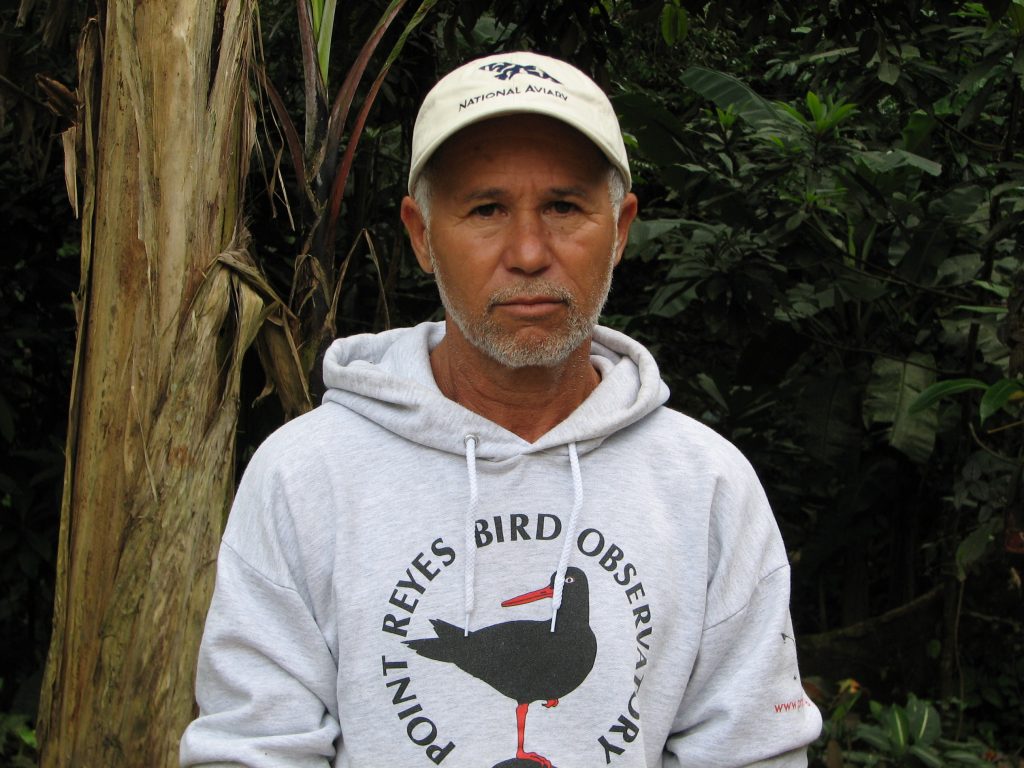
Danilo Antonio Mejía began birdwatching many years ago when one of the pioneer birdwatchers in his country, Annabelle Dod, led weekend birdwatching trips. As a biologist, Mejía learned to band birds and began to work in field studies in the early 1990s, studying overwintering migratory birds in the Sierra de Bahoruco. Mejía received additional training as a student intern for several years in the Missouri Ozark Forest Ecosystem Project, at Point Reyes Bird Observatory in California, and through the National Aviary and Powdermill Avian Research Center in Pennsylvania. He has worked with other ornithologists in studying the ecology of the critically endangered Bay-breasted Cuckoo and the endangered Bicknell’s Thrush, and the parasites of birds in Puerto Rico. He served as the field coordinator for studies of the reproductive success of nesting birds in the Sierra de Bahoruco, and the use of early-successional habitats by resident and migratory birds in the Dominican Republic. Mejía is currently collaborating with Dr. Steven Latta in his studies of factors affecting survival and population size of the Louisiana Waterthrush on breeding grounds in Pennsylvania, and at overwintering sites in the Dominican Republic. Mejía works to inspire more young Dominicans to embrace conservation.
Dr. Mack Frantz, West Virginia University
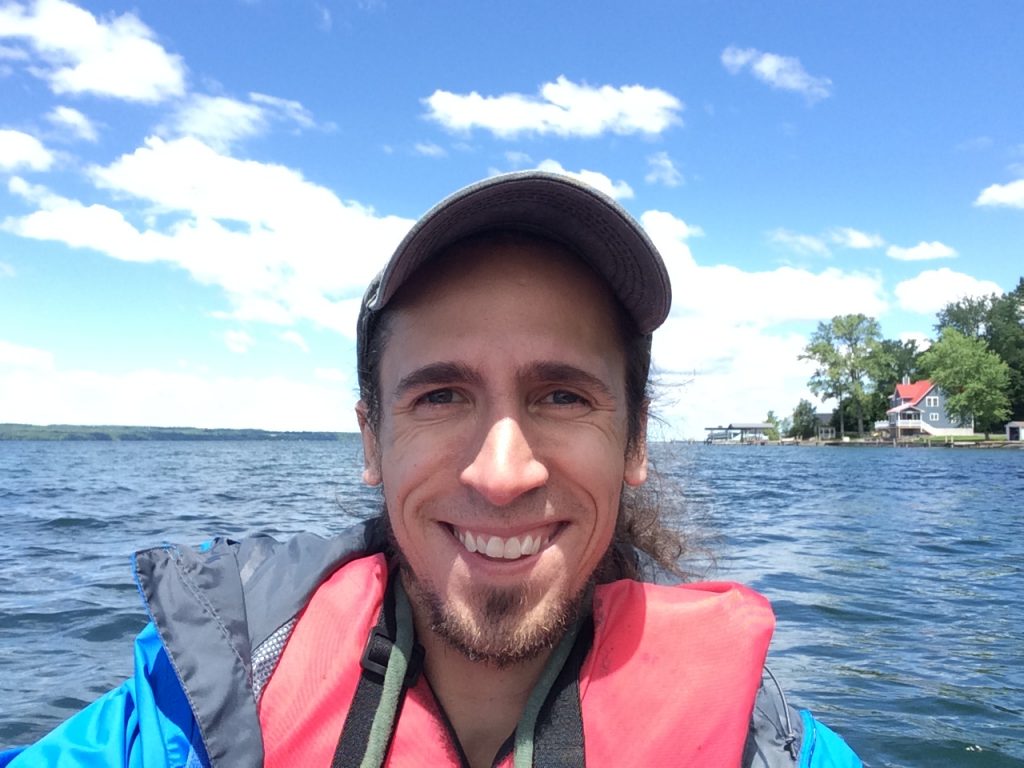
After receiving a M.S. in Biology from Indiana University of Pennsylvania where he conducted a radio telemetry study observing space and habitat use of the Golden-winged Warbler (Vermivora chrysoptera), Mack is now a fourth year Ph.D. Candidate at West Virginia University, advised by Dr. Petra Wood. Mack studies the demographic, spatial, and epigenetic response of the Louisiana Waterthrush (Parkesia motacilla) to shale gas development. The Louisiana Waterthrush is a headwater stream specialist that feeds on benthic macroinvertebrate prey and breeds in heavily forested streams of mountainous WV which also are areas of increasing shale gas development. Mack is collaborating with Dr. Steven Latta at the National Aviary who also is a member of Mack’s dissertation committee. Their collaboration involves assessment of DNA methylation differences between waterthrush in shale gas disturbed and undisturbed streams, as well as examination of contaminant levels in waterthrush and aquatic prey in watersheds disturbed by shale gas. He hopes to one day gain a Master Banding Permit and continue research as a state or federal wildlife biologist.
Dr. Brian K. Trevelline, University of Pittsburgh
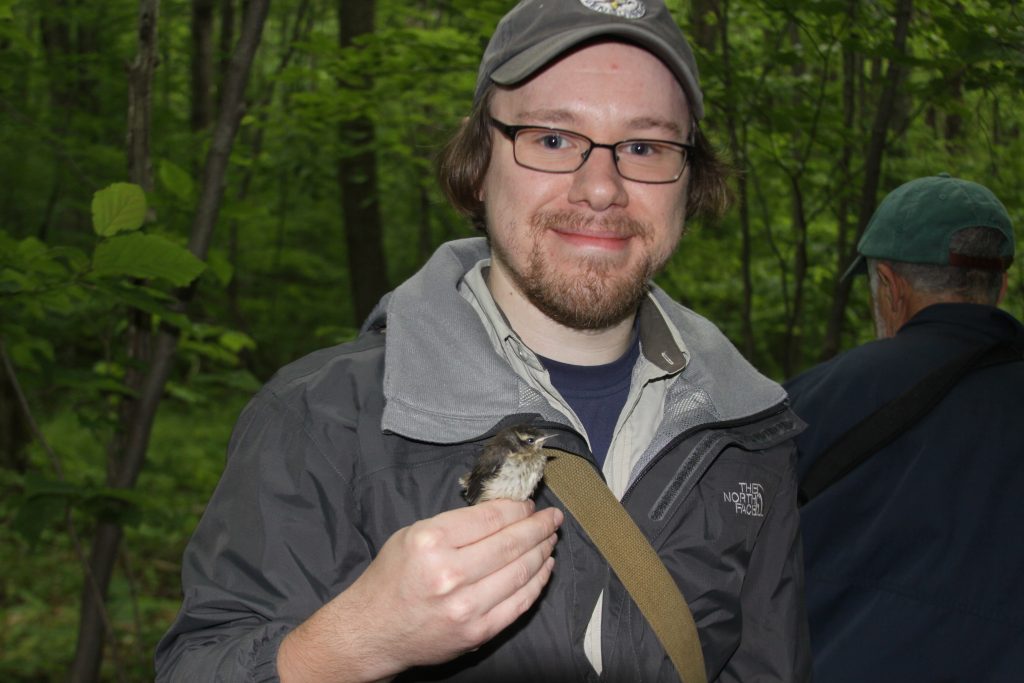
Dr. Brian K. Trevelline is a postdoctoral researcher at the University of Pittsburgh. He received his B.S. in Biological Sciences from the University of Pittsburgh in 2008, his M.S. in Conservation Biology from Duquesne University in 2013, and his Ph.D. in Biological Sciences from Duquesne University (co-advised by Director of Conservation and Field Research Dr. Steven Latta) in 2017. Dr. Trevelline’s research interests span the fields of molecular ecology, host-microbe interactions, and conservation biology. Broadly, he uses molecular approaches to investigate how wildlife respond to changes in resource availability and environmental conditions. For his dissertation, Dr. Trevelline used residual prey DNA in avian feces to show that anthropogenic stream acidification influences the behavior and diet of breeding migratory birds by reducing prey availability. Dr. Trevelline currently has ongoing studies with the National Aviary and the Smithsonian Migratory Bird Center investigating the influence of local environmental conditions on the diet and gut microbial communities of migratory birds wintering in the Caribbean. For his postdoctoral research, Dr. Trevelline uses molecular and metagenomic techniques to study how changes in diet affect the digestive physiology and gut microbiota of several species of migratory birds. More information on Dr. Trevelline’s research can be found at his website: www.briantrevelline.com.
